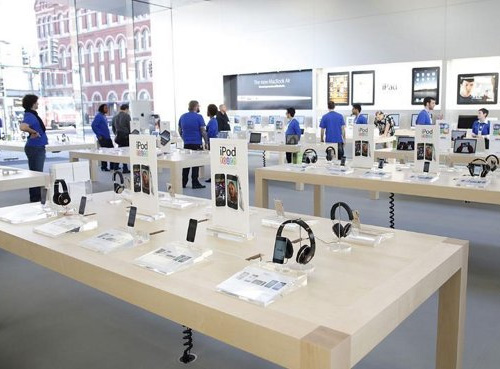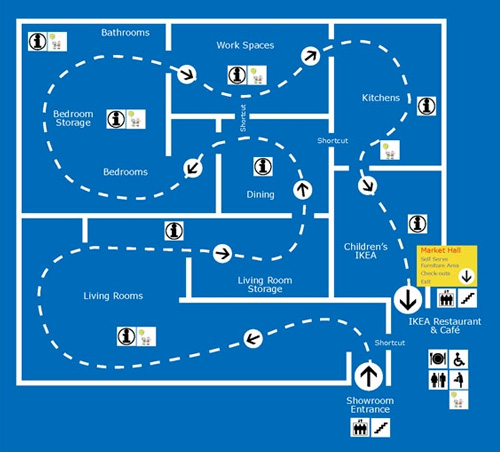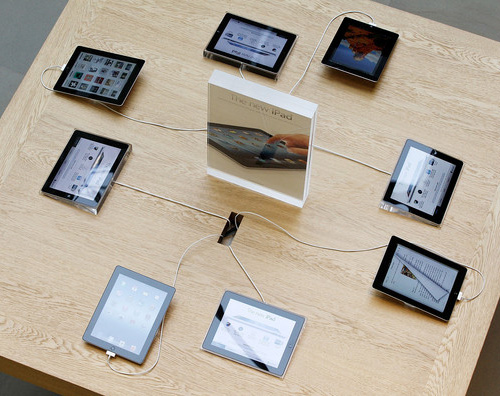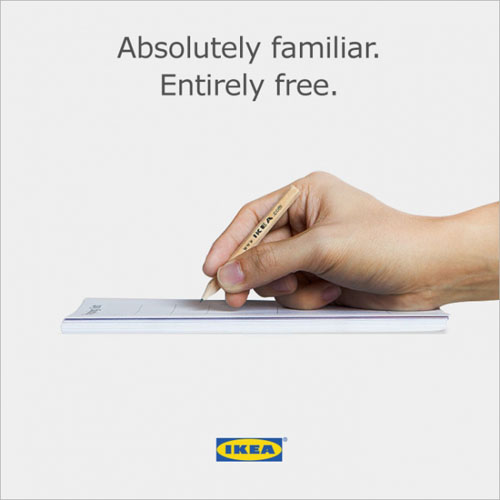The advert for the 2015 Ikea catalogue wasn’t meant to go by unnoticed.
The short clip invited users to “experience the power of the original bookbook” with an “instantaneous touch interface with zero lag”. There’s also a white backdrop, blatantly poking fun of Apple’s product launches.
But it didn’t cause quite a stir the ad agency had hoped. There were better executed brand wars, after all.
Why was that?
First, Apple and Ikea aren’t really competitors. Second, they share more similarities rather than differences. One of such similarities is simplicity. Another is customer-centricity – the immersive experience you get when inside one of their stores.
While one sells furniture and the other sells electronics, these experiences are pretty much unrivaled in their respective markets. It’s something that Ikea has been doing for decades and Apple for a long time as well – and there’s no sign of either of them losing steam.
Their secret lies in an intricate understanding of what the customer wants to achieve.
The reason why Ikea and Apple are so successful at this is simple: both offer a clear case of positioning: both companies position their product around an important job that must be done in people’s lives. In Ikea’s case, it’s that “I need to quickly furnish my apartment or room today”. In Apple’s case, it’s “I need a new iPad”. Then, the right in-store, pressure-free experience is created so that the customer has enough time and freedom to familiarize themselves with the product.
Perhaps Tim Cook, Apple’s CEO, said it best back in 2012:
Our retail stores provide the best buying experience and the best customer service anywhere. And while that’s important for a buyer of a Macintosh, in some ways it’s even more important for a buyer of an iPad or an iPhone or another post-PC device because these devices are new to many people. There needs to be a place to discover them, to learn about them before they are purchased, and learn how to get the most out of them after they’re purchased.
A particular philosophy has been driving the Apple Store’s success: the focus on building relationships. They’ve long focused on people, perfecting the hiring, training and customer engagement process constantly. Customer service employees are taught to listen to cues that reveal what every customer cares about:
- Instead of “Can I help you with anything?”, they ask “What interests you most about this item?”
- Instead of “You should also consider this”, they ask “What do you want to use it for?”
- Instead of “Do you want it gift-wrapped?”, they ask “Who is it that you’re getting it for?”
This is indeed something that many forward-thinking companies try to emulate – but fall flat on their face because they are focused on “selling” products. Too many companies don’t understand that people just don’t want to buy stuff. The emotions leading up to purchase decisions are not conductive to outside interference. In many cases they’re negative – dealing with anxiety, stress and uncertainty.
The customer experience is immensely personal
People don’t go to the Apple Store or Ikea regularly. Yet, even the most composed of us behave like kids in a candy shop from the moment we make way through Ikea’s doors. Or show up for an unveiling of the next Apple device.
There’s perfectly staged furniture, interesting centerpieces, the ability to design a dream kitchen. I even know someone who swears by a theory that going to Ikea with a prospective loved one is a sure way to know if they’ll go the distance in the long run.
She even went to say that by hanging around the exit and reading the mood of couples you could definitely tell who was in a happy relationship or who wasn’t. Now that is a people-focused store if there ever was one!
With a SaaS system, it’s important to attain this same level of interest as early as possible. This means getting customers physically interacting with your product, having them learn what works and what doesn’t, so they feel comfortable before spending a dime.
1. Design and implement a path the customer should follow
If you’ve ever walked through an Ikea store, you know it’s not a typical furniture store. You are guided along a path through various areas of the store until you see something that you may want.
photo credit Ikea
So if you’re looking for a particular vase, you’ll have to walk the whole store until you get to your item. This may sound counterproductive at first, but there’s an important element here – customers may not know what they want so it’s better to guide them in the right direction than to misread their signals.
Onboarding
Of course, personalizing the onboarding experience is a must as the first impression determines the general direction that customer’s journey will take. Segmenting the onboarding process to correspond to user profiles is one way to accomplish this.
If segmentation isn’t possible, consider the Ikea approach – go through everything that the customer may be wanting out of your product. Let them navigate through a list of things they need to do to get started (yet allow them skip the less crucial components).
Email funnels
Email is an important part of the onboarding process and should be a natural extension of your website and product. A successful welcome email should be personalized, build trust and compel users to act fast. If users sign up and leave – you might be dealing with a proverbial deer in the headlights shopper – consider sending a series of “Getting Started” emails with easy-to-digest tips.
Video courses
Customers aren’t always going to reach out when they don’t understand something. Videos quickly relay important information to customers who are trying to get familiar with your product. Incorporate a number of short videos during onboarding, email & marketing communication and instill much-needed confidence in customers who might be lost.
2. Help customers make a decision on their own terms
When I visit Ikea, I’m presented with a re-created living room or bedroom arrangement which helps me visualize these items in my own home. Apple skillfully replicated this method using a simple, no-frills approach with friendly staff and clean displays.
They’ve even decided to remove magnetic anti-theft restraints because it hurts the user experience.
photo credit Apple
Apple believes that a shopping experience that’s conductive to customer objectives takes precedence over sales figures (including an occasional missing iPhone from their showroom).
Upselling and cross-selling
Upselling and cross-selling techniques are essential for SaaS businesses as this helps combat a major money-drainer: churn. Sometimes, even downselling may be necessary if it gets the customer to stick around. Keep the customer’s objective in mind when selling, otherwise they’ll be forced to look elsewhere.
Cater to the user’s internal needs
Every customer has hidden, internal needs that could to be addressed. You can cater to these needs by utilizing social proof: reviews, images and videos of others using your product. Make use of scarcity tactics such as limited availability, exclusivity and similar or shared values.
Don’t forget the carrot
Consider “end of the road” nudges if you want customers to make a decision faster. One example is emails and messages that appear once the trial is almost up. This can also work with upsells: Want certain functionality? Please upgrade or contact us – if not a sale, this opens the door to conversation so you can learn more about the customer is looking for.
3. Allow customers to help themselves
When you shop at Apple or Ikea, you’re not going to be interrupted by any sales reps. In the case of Ikea, you’re free to browse at your leisure until you reach out to one of the numerous employees scattered around the store.
photo credit Ikea
If you want to offer a similar self-service experience for your customers, you need to take the same stance.
Educate employees
Your self-service system must complement one-on-one support, not replace it. Employees must be educated and given the responsibility to do what’s required of them. Mix a perfectly trained employee with a flawless self-service system (be it a knowledge base, tutorials, feedback tab) and customers are in for a truly friction-less experience.
Scale the experience
As more users visit your site, will your self-service infrastructure be able to handle it? If something can be done with a self-service app or automation, great – but don’t discount the hardware and customer service software designed to do the job.
Ensure the purchase process
When your customers want to purchase from you, the last thing they need is friction. How easy and seamless is the purchase experience? Is it easy for the customer to do everything themselves yet reach out for support on a moment’s notice?
An unlikely rivalry
If there’s anything the unlikely rivalry between Apple and Ikea could teach us, it’s not to be afraid of looking past your industry. Customer experience is something that transcends individual companies and markets – it’s something that separates successful brands to mediocre ones.
Regardless of whether you’re b2b or a b2c, you’re serving a human at the end. Companies that do particularly well with getting the human aspect right (such as Ikea and Apple), tend to win out in the end.
Note: This post was originally published at the Helprace Blog



